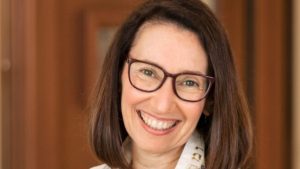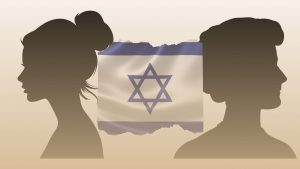Stories of survival
Published April 2, 2010
Rudy Oppenheim still gets Christmas cards from the neighbor who tried to murder him.
“We grew up together and we played together,” recalled Oppenheim, now 81, of the childhood friend who showed up at the 10-year-old’s door in Elmshorn, a small town outside Hamburg, Germany. It was the day after Kristallnacht and Oppenheim’s father had just been arrested. Handsomely clad in the crisp brown shirt and black shorts of the Hitler Youth, Oppenheim’s young playmate arrived and announced that he intended to receive a medal. He was going to kill a Jew.
“Who?” Oppenheim asked.
ADVERTISEMENT
“You,” replied his friend, producing a knife.
In the resulting struggle, Oppenheim suffered a cut on the hand, some of his blood staining the other boy’s clothing. His attacker began to cry.
“It was a demerit to soil your uniform, you see,” Oppenheim said.
Oppenheim’s strange story will be among those recounted at the upcoming community Yom HaShoah commemoration, sponsored by the Holocaust Museum and Learning Center in Memory of Gloria M. Goldstein. The program will take place at 4 p.m. April 11 at Brith Sholom Kneseth Israel. In addition to a candlelighting, liturgical readings and prayers, the event will also feature music by family members of Szyfra and Gregor Braitberg, a violinist and Holocaust survivor who died last year. B’nai B’rith will read names for the “Unto Every Person There is a Name” project.
The theme of this year’s program is “Resistance, Defiance, Courage.”
“By being in a situation in which their humanity and especially their faith was being stripped away, to maintain those qualities by teaching in secret, smuggling food, offering food to one another, writing poetry or creating art, there were lots of ways to define resistance,” said Dan Reich, HMLC curator and director of education.
Kent Hirschfelder agrees. He says the program is an effort to address one of the most common questions in Holocaust studies: Why didn’t Jews do more to resist as the nightmare of the Shoah darkened the world around them?
“What a lot of people don’t realize is that resistance can take many forms,” said Hirschfelder, an Olivette commercial real estate broker who will be chairing the Yom HaShoah observance for the fifth straight time. “They’ll see that in this year’s program, where people will speak on those forms – either their personal or family experience about a form of resistance. I think that people will begin to realize that resistance wasn’t just the movie version of blowing up a train track or fighting in the woods.”
Ten speakers are on the schedule this year. As always, Holocaust survivors are among them.
ADVERTISEMENT
“We recognize that we are entering the final years unfortunately for many of our survivors,” Hirschfelder said. “They are now in their 80s and 90s. We want to make sure that they still have a chance to tell their stories firsthand.”
Pier Marton’s family history reflects this year’s theme as much as anyone’s could. His late father was a Medal of Liberation winner who spent the war in the resistance in Paris. The elder Marton employed his talents as graphic artist to falsify documents and design anti-Nazi flyers. While his mother, who went into hiding in Budapest, was not in the armed resistance, she waged her own form of resistance by refusing to obey registration orders, the main reason she is alive today, Marton said.
Marton, the first speaker on the April 11th program, will recount some of his father’s activities during the conflict.
“For me, it is not about reciting dates and numbers of victims,” said Marton, a senior lecturer in film and media studies at Washington University “It’s about honoring the past by living the present in a very conscientious and responsible way.”
Second generation survivors will play a key role in this year’s commemoration. They, along with students from Washington University where Hillel is helping to support the program, will do readings from survivors and witnesses as part of the day’s events. The readings will come from the Oral History Project, which has been a labor of love for volunteer Vida “Sister” Prince since the museum’s inception in 1979. She said that many who died in the Holocaust were people of means and status in the community.
“We already had their testimonies of what happened during the war,” she said, “but I wanted to know how they lived before and if they had photographs so that people would see that they had a life.”
Holocaust survivor Leo Wolf has been a supporter of the Yom HaShoah event since the late 1960s. One of his grandchildren will speak about his story. The Creve Coeur resident spent time in various camps, including Auschwitz. His parents died in the Holocaust as did two sisters and a number of uncles, aunts and grandparents.
“I lost everybody. Nobody was left,” he said. “It’s very important that the people know what went on. We have to tell the story.”
A native of Lodz, Poland, Wolf came to St. Louis in 1959. His memories haven’t faded.
“I think about it all the time,” he said. “It’s something that you cannot forget.”
Oppenheim can’t forget either. The University City resident who would later visit his native land to set up a Holocaust Museum there, noted that many Jews stayed in Germany despite the growing threat from Hitler.
“They did not think good neighbors would allow this to happen.”
Oppenheim had had his own experience with neighbors. He and his parents escaped to Shanghai, China. He would lose 26 relatives to the Shoah.
Still, he’s not bitter about his experiences, even maintaining a friendship with the neighbor boy who pulled a knife on him so long ago. Until last year, he still received holiday cards from his friend who was just another child caught up in the madness of one of the world’s darkest hours.
And what of the incident from 1938?
“We never bring it up,” he said.
Yom HaShoah Community Commemoration
When: 4 p.m. April 11
Where: Brith Sholom Kneseth Israel, 1107 East Linden Avenue, Richmond Heights
Cost: Free and open to the community
More info: www.hmlc.org















